One mushroom that is worth looking out for is Suillus luteus, also known as the Slippery Jack. This mushroom is prized for its buttery flavor and texture, making it a popular ingredient in many recipes. They are commonly called slippery jacks or sticky buns due to the brown cap, which is slimy when wet. From its distinctive features to its preferred habitat, this article will cover everything you need to know to forage the golden slippery jack.
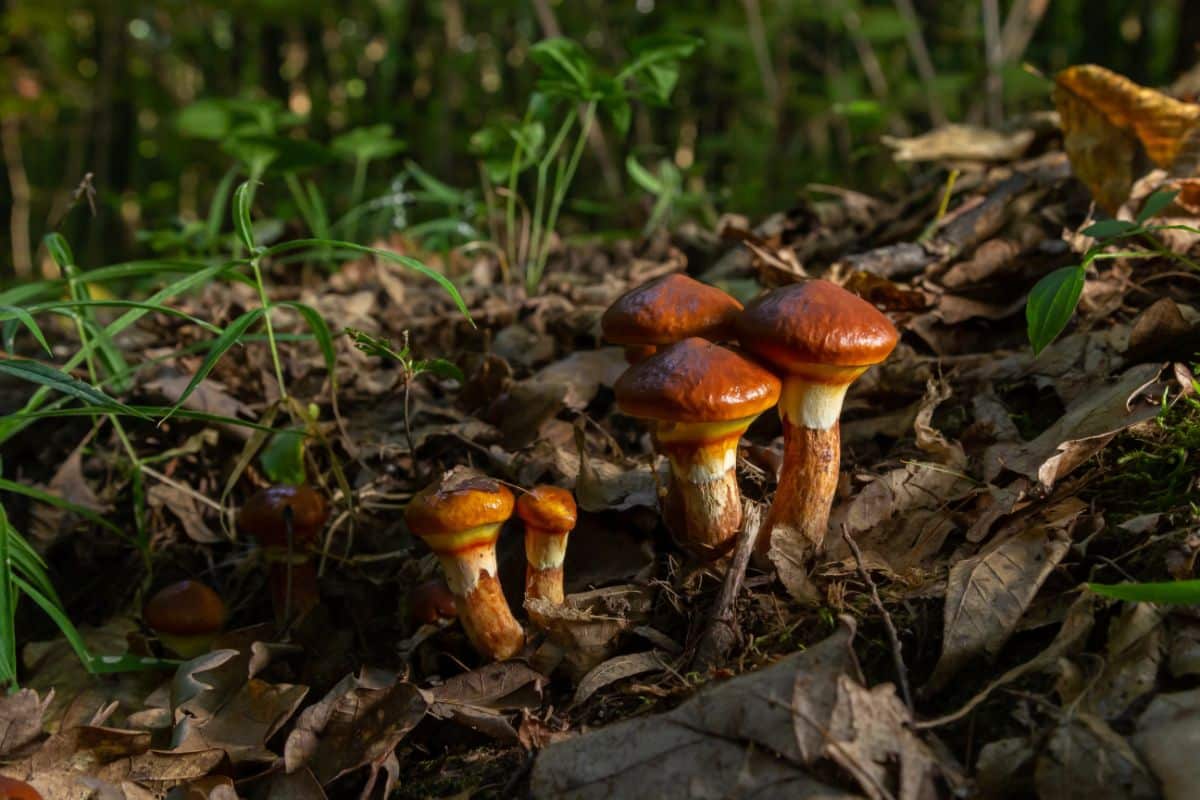
Jump to:
All About Slippery Jacks
The slippery jack is a fungus species that falls within the Boletaceae family. It typically grows in clusters and is recognized by its yellow to orange-yellow cap and yellow pores. Its stalk is usually white and covered with a slimy substance.
Slippery jacks are a common bolete mushroom found throughout Europe and North America. They’re actually an introduced species that took hold and spread across the continent. Charles Horton Peck proposed in 1887 that the species was introduced to New York on Scots pine, and DNA studies have supported this notion. Thankfully, slippery jacks aren’t a problematic invasive species; in fact, they’re an excellent edible mushroom. Slippery jacks have also spread to Central and South America, Australia, South Korea, and South Africa.
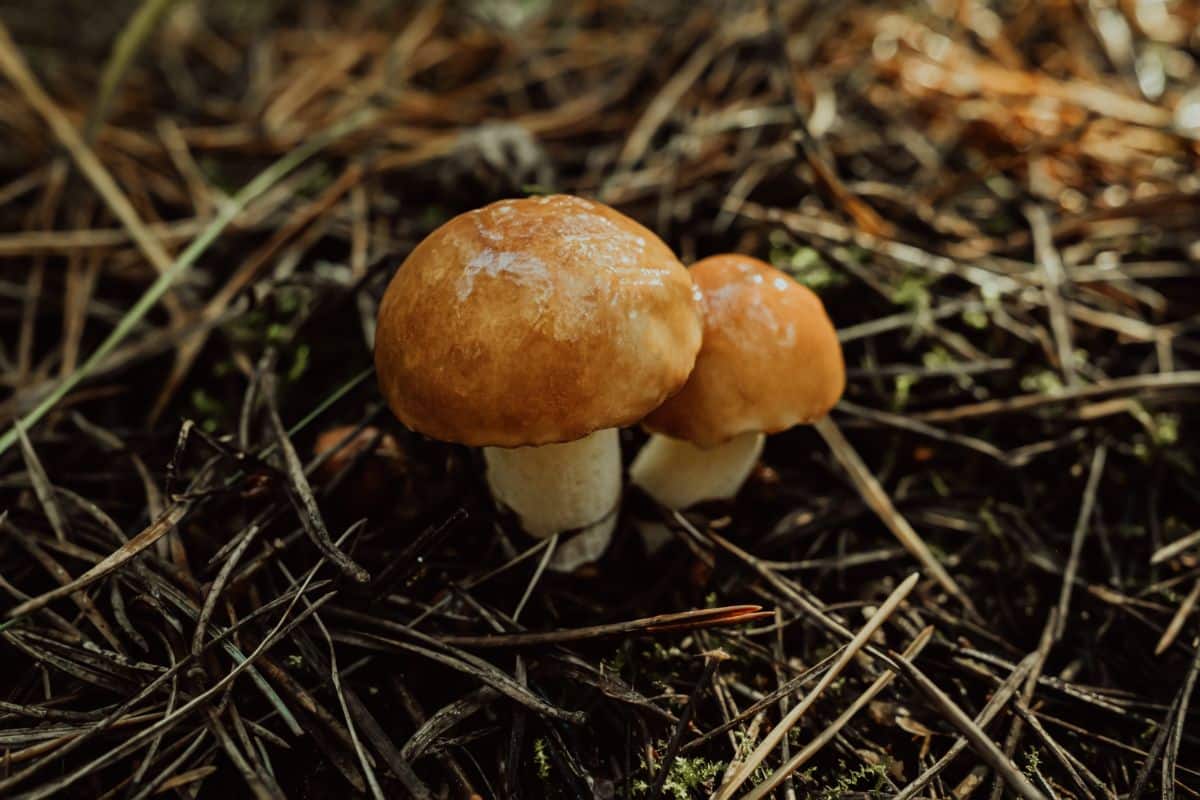
This fungus thrives in coniferous forests in its native range and pine plantations in other countries where it has become established. By enveloping the tree’s roots with its fungal tissue, it forms a symbiotic ectomycorrhizal relationship with living trees. Like other boletes, it has tubes on the underside of the cap instead of gills, from which the spores escape when they mature. The mushroom is most commonly found in the late summer and early fall, but it can be found as early as July and as late as November. It prefers moist soil and can often be found growing in clusters.
The Suillus genus name is derived from an old word for fungi, swine. It is also known by the British Mycological Society’s accepted name of “slippery jack,” as well as “pine boletus” and “sticky bun,” the latter due to its resemblance to a type of pastry.
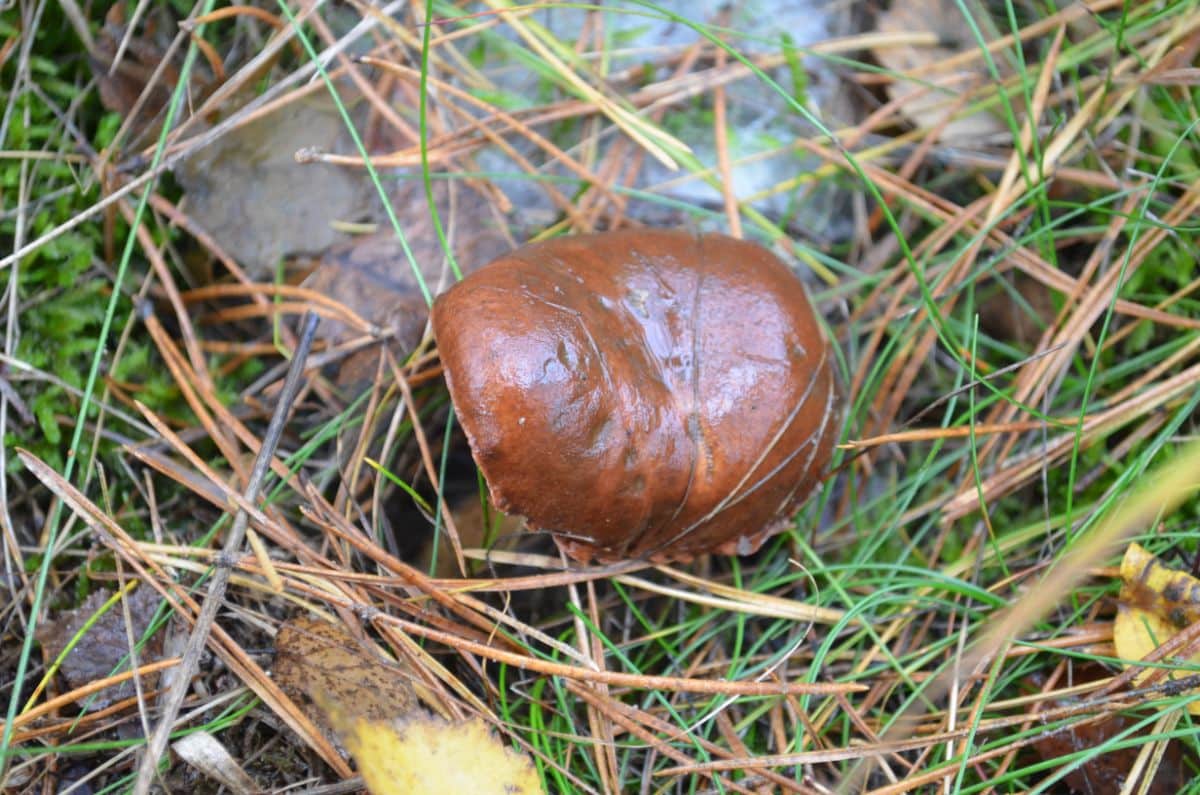
Slippery Jack Culinary and Foraging History
Slippery jack is an edible mushroom prized for its buttery texture and nutty flavor. However, many people consider it of low quality because you must peel the slimy top off before preparing it. It is often ignored due to the fussiness of preparation and trouble it takes to prepare. For many, though, it is entirely worth it. In Slavic cultures, it is highly regarded and considered to be as good or better than porcini in flavor.
There is actually a strong commercial side to slippery jacks. In Chile, harvesters are paid to pick slippery jacks to import to Italy. In Australia, foragers flock to pine plantations to find slippery jacks and saffron milky caps. Polish foragers, in particular, seek out these pine plantations for a mushroom reminder of their homeland. Additionally, slippery jacks are the most common bolete found in the Falkland Islands, where it typically grows in windbreaks and gardens.
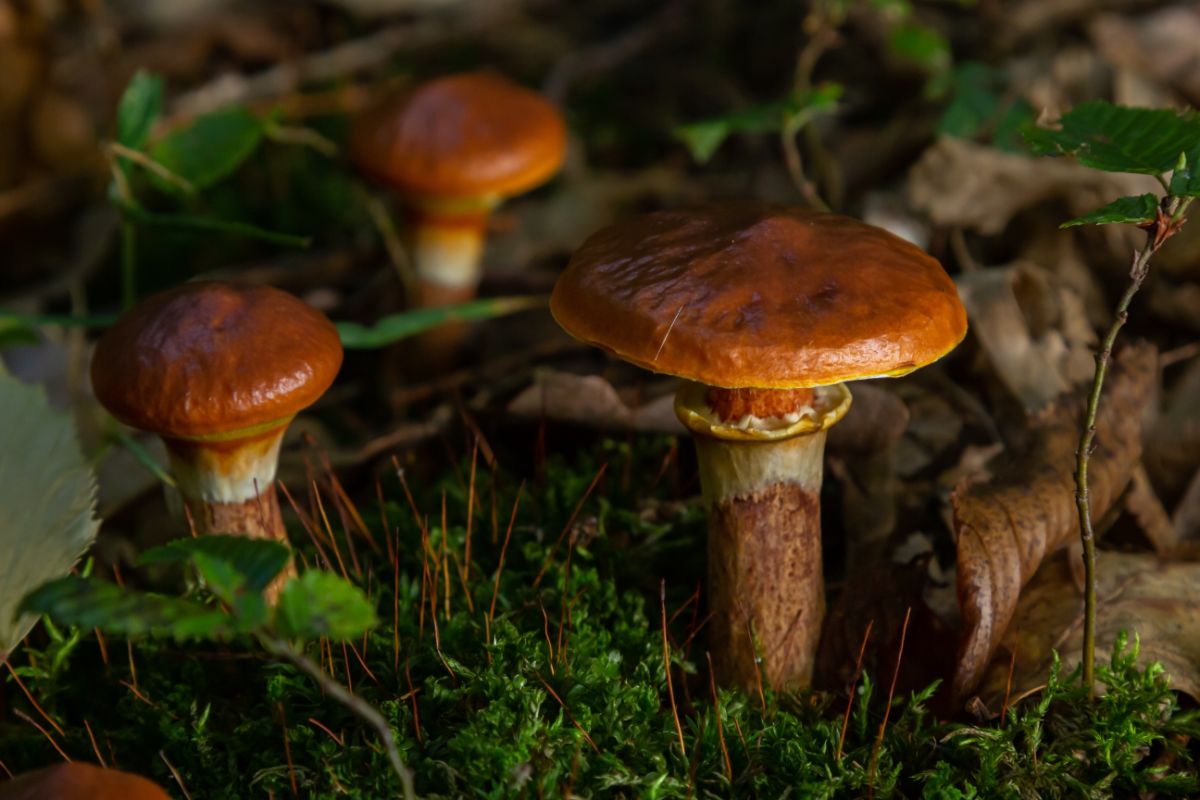
In Ecuador, plantations of Pinus radiata were extensively planted around Cotopaxi National Park, and Suillus luteus boletes appear in great numbers all year round. According to a 1985 field study, the production was estimated to be 3000-6000 mushrooms per hectare, with a potential of up to 1,000 kilograms of mushrooms (dry weight) per hectare per year. This starkly contrasts the seasonal nature of the slippery jack’s appearances in other places. Interestingly, the mushroom is not found in the areas of native vegetation nearby. The abundance of the species has caused pine plantations to be established or maintained in parts of Ecuador for the purpose of harvesting slippery jacks.
This mushroom is commonly used in soups, stews, and sauces, and it pairs well with a variety of ingredients. It contains a range of nutrients, including protein, fiber, and vitamins B and D. It is also a good source of minerals like potassium, phosphorus, and selenium.
Slippery Jack Identification
The slippery jack has several distinctive features that make it easy to differentiate from other mushroom species. The cap is usually convex and slimy, ranging in color from light yellow to dark brown. The stem is typically whitish or pale yellow and covered in small, dark brown scales. The pores underneath the cap are initially yellow but turn brown as the mushroom matures.
One of the best ways to identify slippery jacks is to look for them growing under pine trees. The mushroom forms a symbiotic relationship with the roots of the pine tree, and it is often found growing in close proximity to the tree. Another way to identify the mushroom is to look for its slimy cap, a distinctive feature.
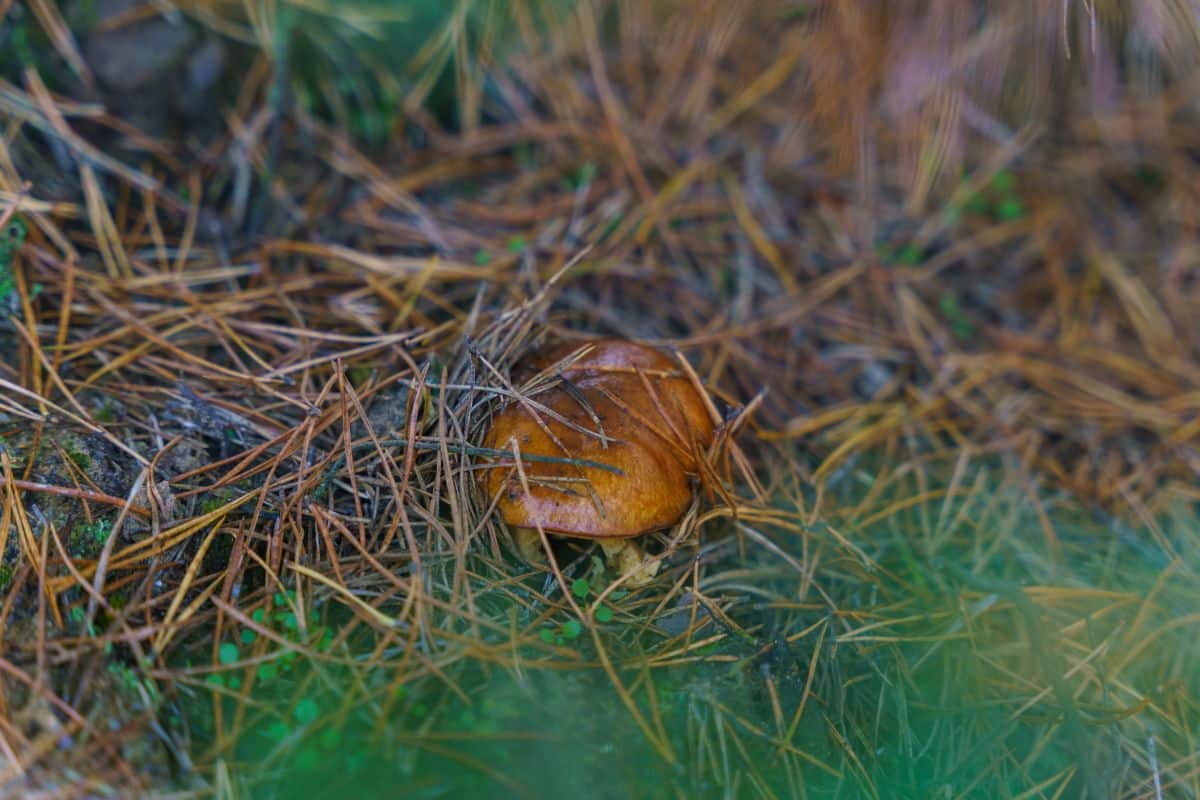
Season
Late summer and fall, and into winter in warmer regions.
Habitat
Slippery jacks grow in association with pine trees, particularly 2-needle pine species. In North America, they like red pines, Monterey pines, and eastern white pines. There is some debate around whether they associate only with hard pine species (2-3 needles in a bunch) or also grow with soft pine trees (5 needles in a bunch). Many foragers find slippery jacks under soft needle pines, which may indicate they’re a different species. More study needs to be done on this issue.
This mushroom grows from the ground; it never grows from trees or decaying wood. It grows singularly, either alone or, more often, in large scattered groupings.
This species is tolerant of northern latitudes and can be found in coastal and mountainous pine forests, as well as in areas with more than 40 inches of annual rainfall. The fungus fruits in summer, and autumn in large troops or fairy rings following wet weather.
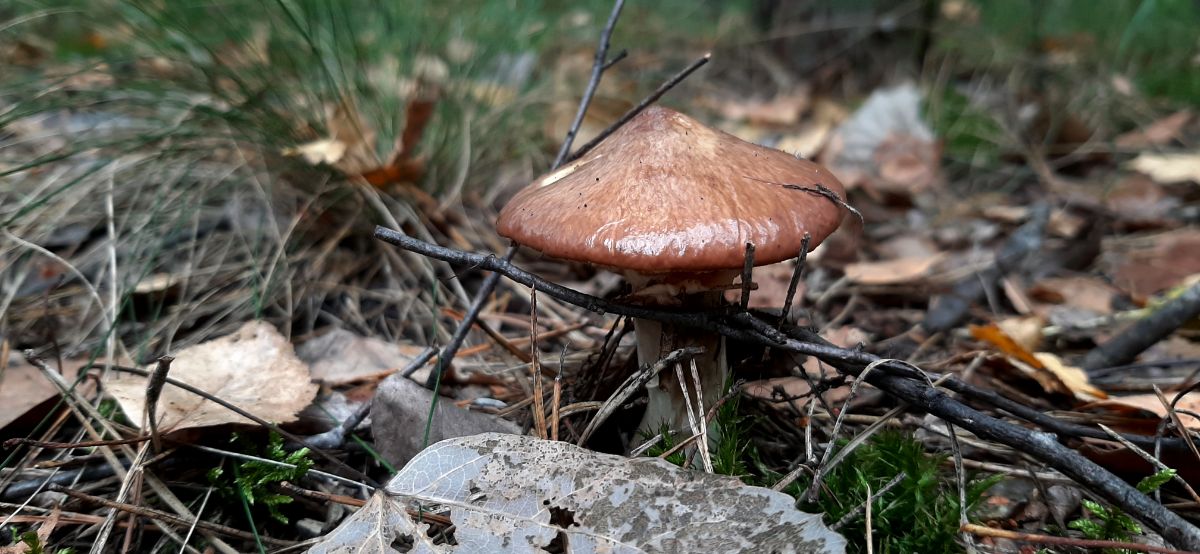
Identification
Cap
The cap of the slippery jack starts out rounded like a smooth, slightly flattened cone. It is reddish-brown, olive, dark brown, or yellowish-brown in youth, then fades to a dull tan or gray. As it matures, the cap spreads out to look like a bread bun on the forest floor. The top of the cap has a very thin sticky “skin,” also known as the cuticle, that is a key identification feature. This cuticle peels off easily. During dry weather, the cap may not be sticky; it will still be shiny, though.
The cap may have a dark spot in the center of the cap, and it often features radial streaking of a darker color. Caps range in size from 1.5-4 inches wide but can get quite large at times.
Pores
Underneath the cap, this bolete species has pores instead of gills. The pore tubes are yellow in color when young but turn olive to dark yellow with age. Like the cap, they can be peeled off the flesh. The immature fruiting bodies feature a half-covering veil that encompasses the pores. The pores do not bruise when handled or cut.
Stem
The stem is 2.0-3.9 inches long and 0.8-1.2 in wide. It is pale to bright yellow and equally thick but may have a swollen base in some specimens.
A partial veil is initially attached to the edge of the cap. As the mushroom reaches maturity, the partial veil separates from the cap and remains around the top of the stem in the form of a strong, thin ring called a skirt. The skirt starts out all white, then morphs to have a white topside with an underside that is dark brown to violet.
Above the skirt, the stem is covered with brownish glandular dots. The portion of the stem below the skirt is streaked brown and often a bit slimy.
Taste/Smell
The flesh of the fungus is white or pale yellow, does not change color when damaged, and is soft, with a “pleasant” taste and no distinct odor.
Spore Print
The spore print is typically cinnamon-brown or clay-colored.
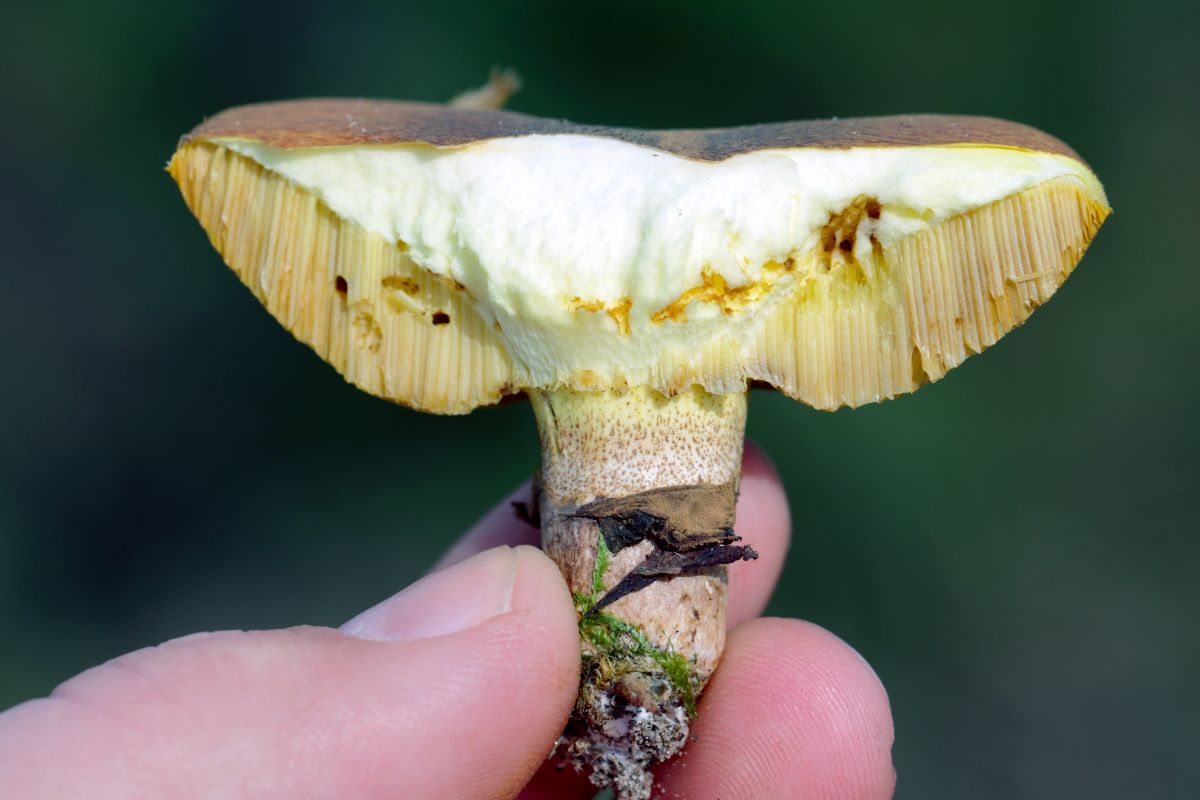
Distinguishing Characteristics of Slippery Jacks:
- Slimy brown cap
- Brown dots on the upper portion of the stem
- Prominent skirt (ring around the stem) with a purplish underside and white top
- Found under pine trees
- The flesh does not change color when cut or bruised
- Pores do not change color when cut or bruised
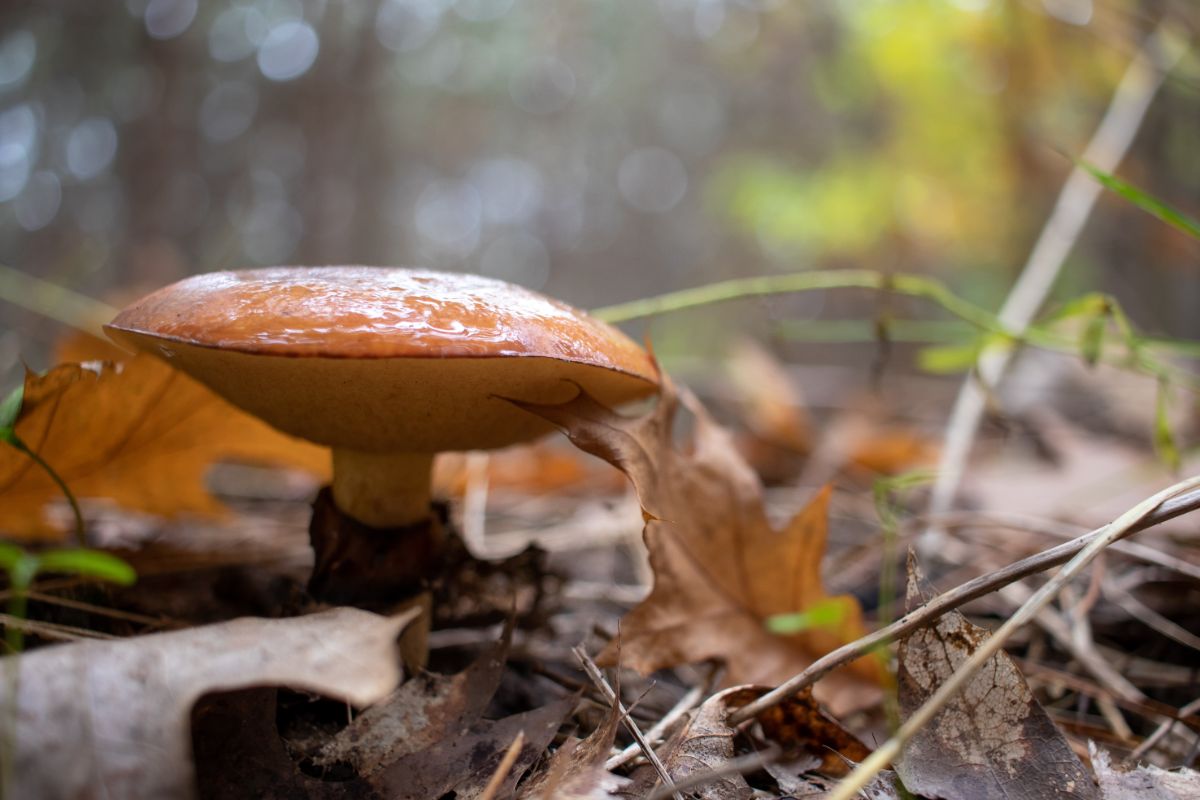
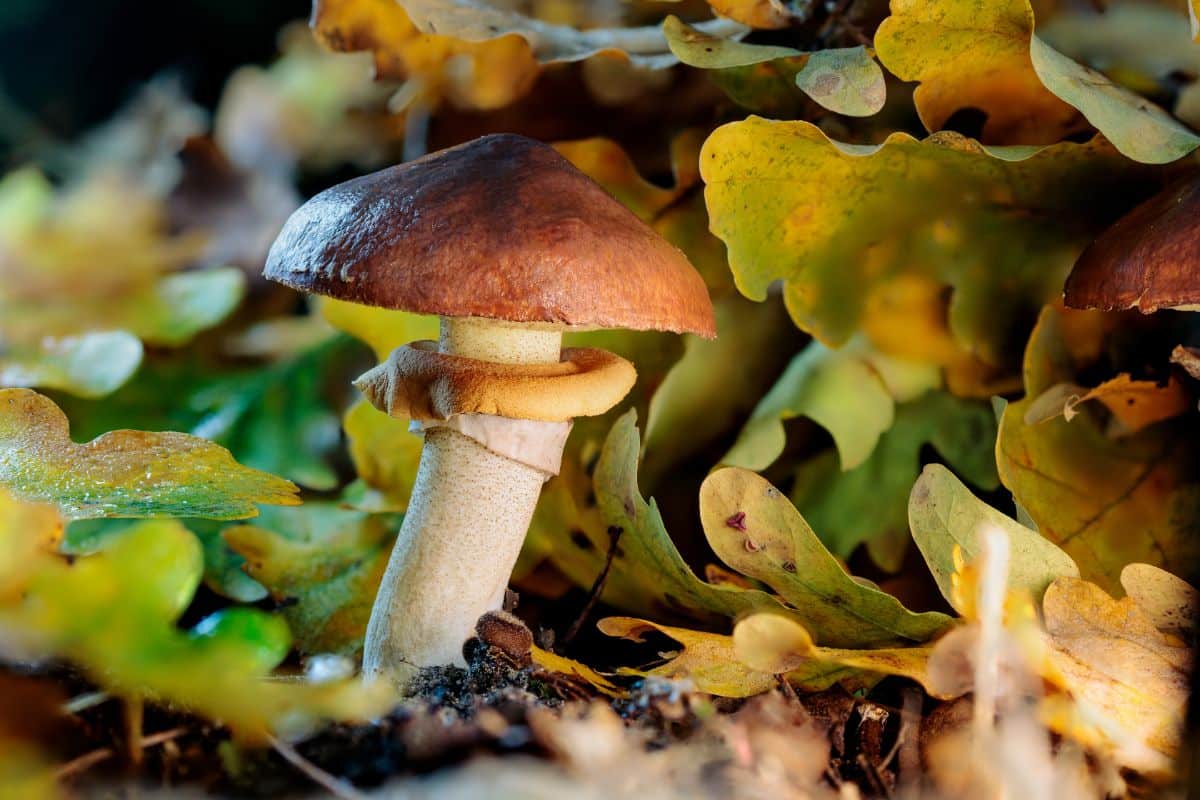
Slippery Jack Lookalikes
Velvet Bolete (or Variegated Bolete) (Suillus variegatus)
This species is similar in appearance to the Suillus luteus but has a darker cap and smaller pores. In addition, the cap has a velvety appearance and feel (hence the common name) when it is young. As it ages, the velvetiness goes away and turns smooth and tacky – this is when it gets confused with the slippery jack. The velvet bolete also lacks the skirt around the stem that slippery jacks have, which is usually enough to differentiate them. However, sometimes the slippery jack skirt gets disintegrated due to weather or bugs and may lack it.
Another difference is the color of the flesh, which is light yellow, although sometimes the slippery jack flesh is pale yellow, too. The velvet bolete flesh may stain faintly blue when cut. Velvet boletes are edible but reported to have an unpleasant metallic taste and, therefore, aren’t commonly foraged.
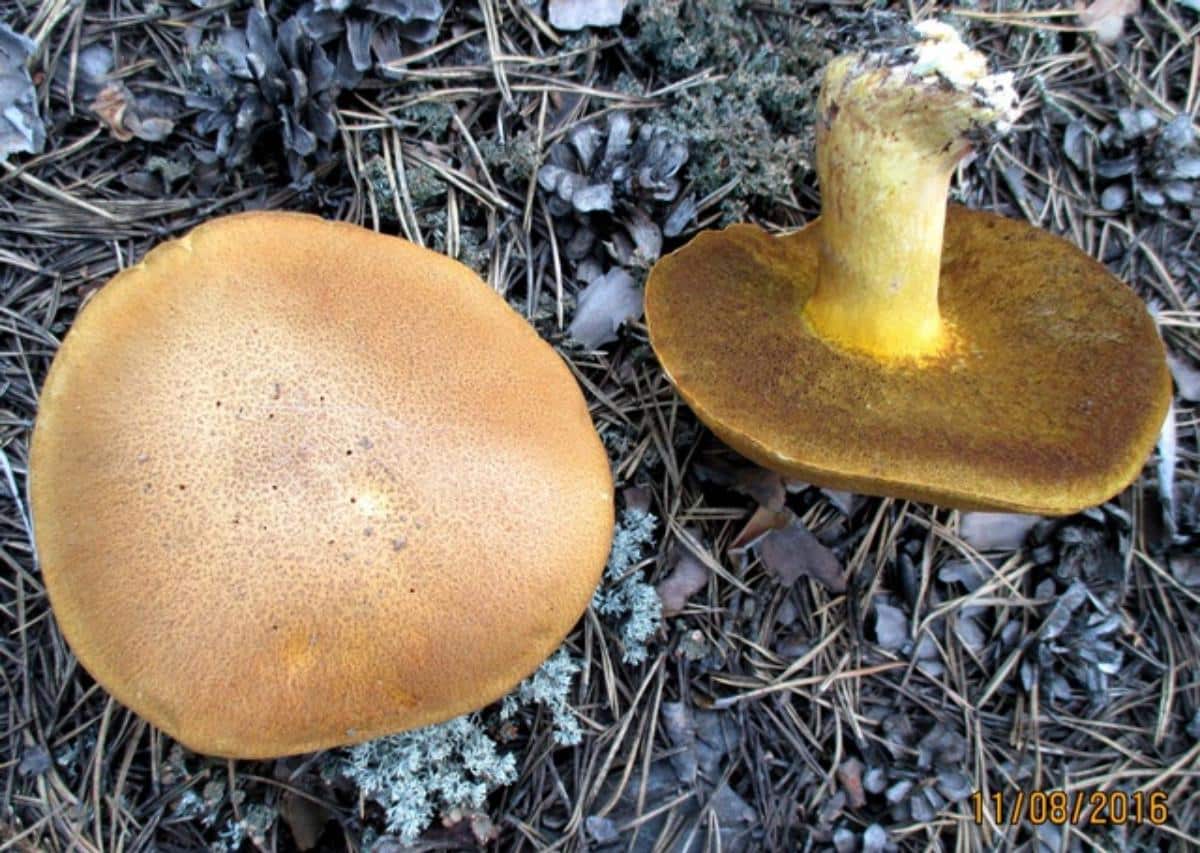
Granulated Bolete (or Weeping Bolete) (Suillus granulatus)
The granulated bolete is another common edible species with a brown, wet-looking cap. However, it does not have a skirt around the stem, is yellow-fleshed, and exudes latex droplets when young. The upper part of the stem is covered in tiny black dots, like little grains.
This bolete is not native to North America and was likely brought in with red pine trees from Europe. Its occurrence is reported in North America, but its range is unknown due to it often being confused with the native North American species, Suillus weaverae. Both species are edible.
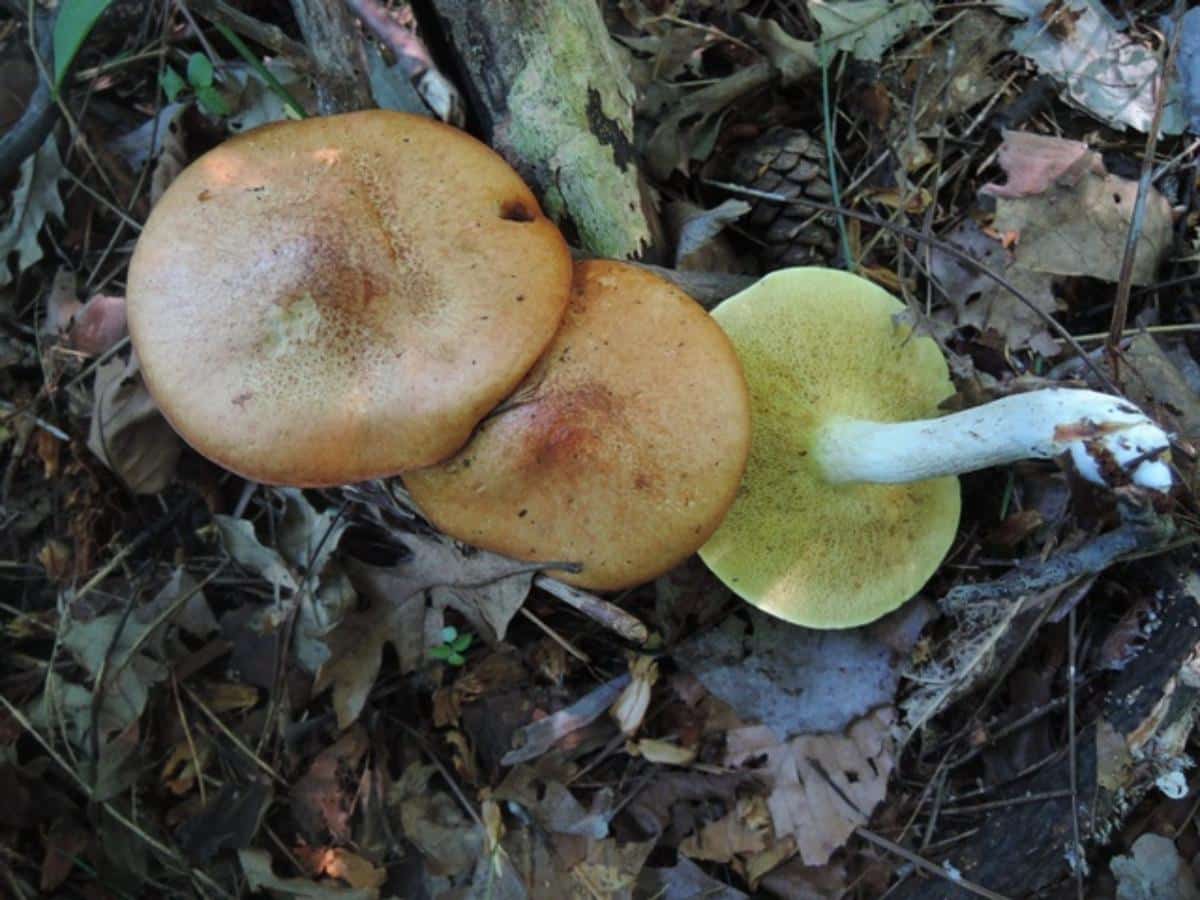
Suillus weaverae
In many identification books, this bolete is listed as Suillus granulatus, the granulated bolete. However, recent research has discovered that North America’s primary bolete with the granulated stem and weeping latex is S. weaverae. Like the European version listed above, it differs from slippery jacks with this highly dotted stem and lack of a skirt around the stem. This is an edible species.
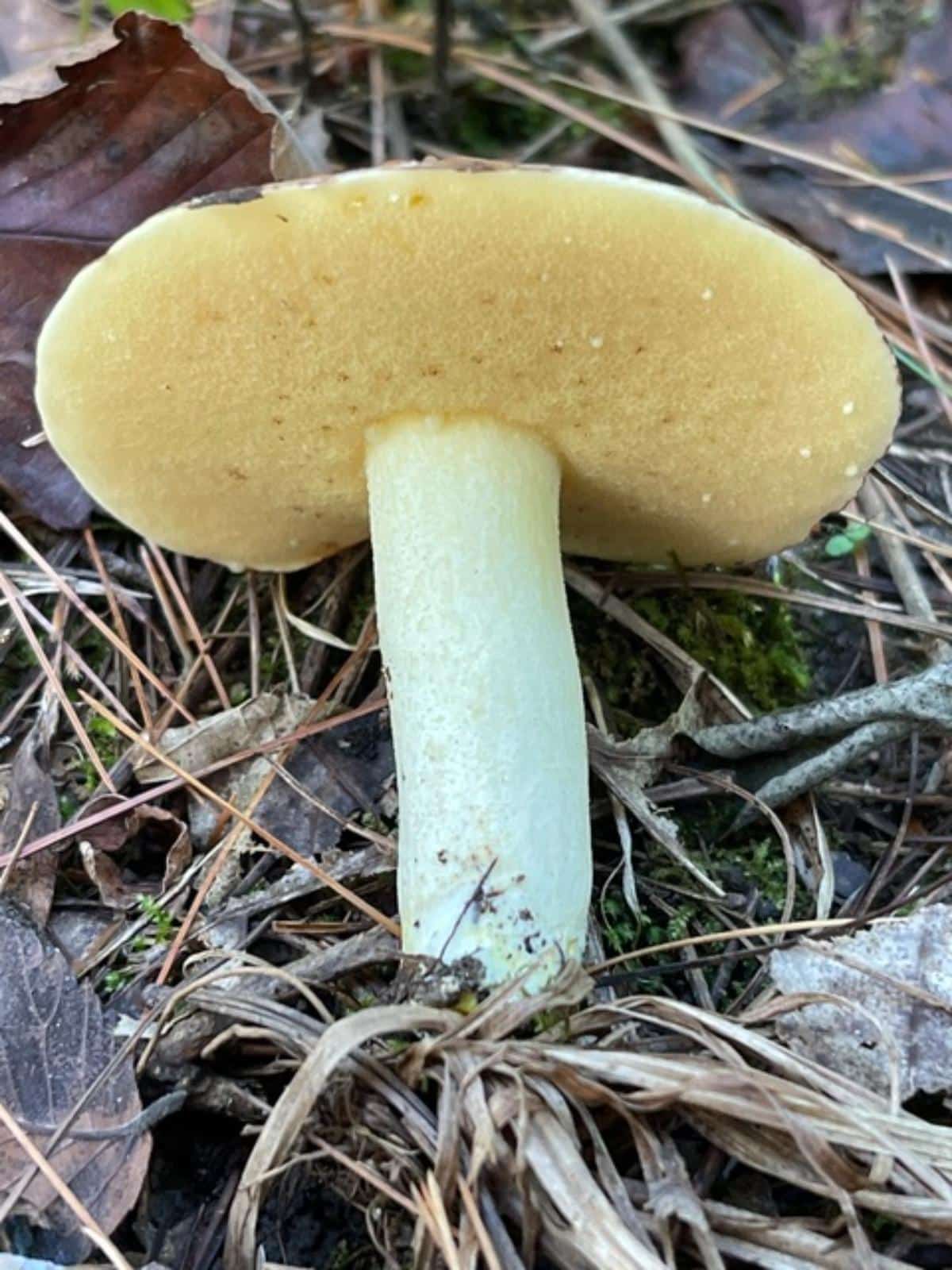
Suillus cothurnatus
This slippery jack lookalike has all the same features – a brown sticky cap, partial veil, brown dotted stem, and yellow pores. However, the band-like ring around the stem tends to be brownish instead of purplish, and the pale yellow or orangish cap flesh stains dark purple. S. cothurnatus is a southern species reported in North Carolina, Florida, and Texas.
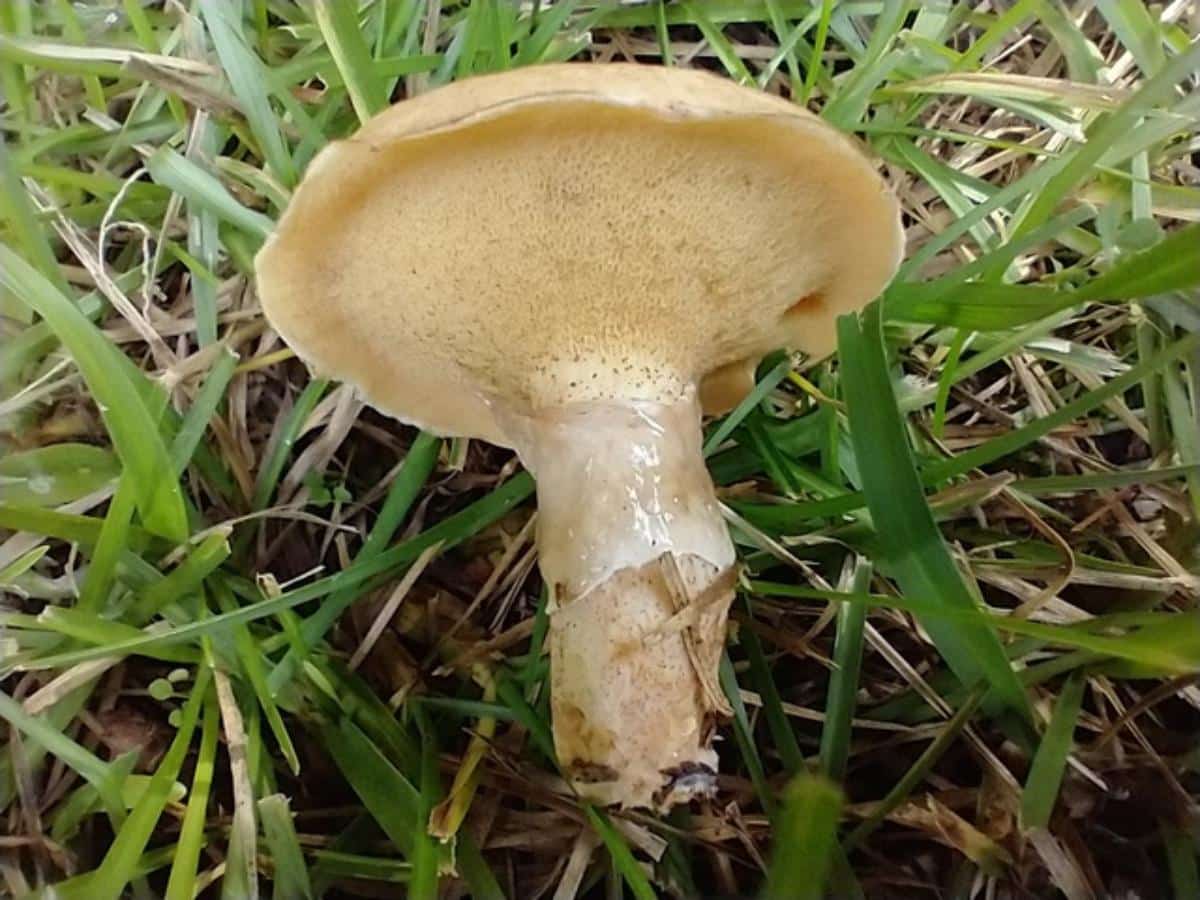
King Bolete (Boletus edulis) aka Porcini
While the two species look similar at a glance, several key differences can help you differentiate between them. Young slippery jacks, in particular, look remarkably (hopefully?) like king boletes, with their brownish bread-bun shape and stocky appearance.
The differences are many, though, when you investigate further. King boletes do not have a skirt around the stem, their caps aren’t nearly as slimy, they don’t have dots on their stems, their pores start out white, and there is fine white reticulation at the very top of the stem. Confusion often happens between the two if the slippery jack has lost its stem skirt, but the differences are apparent once you look at the other factors.
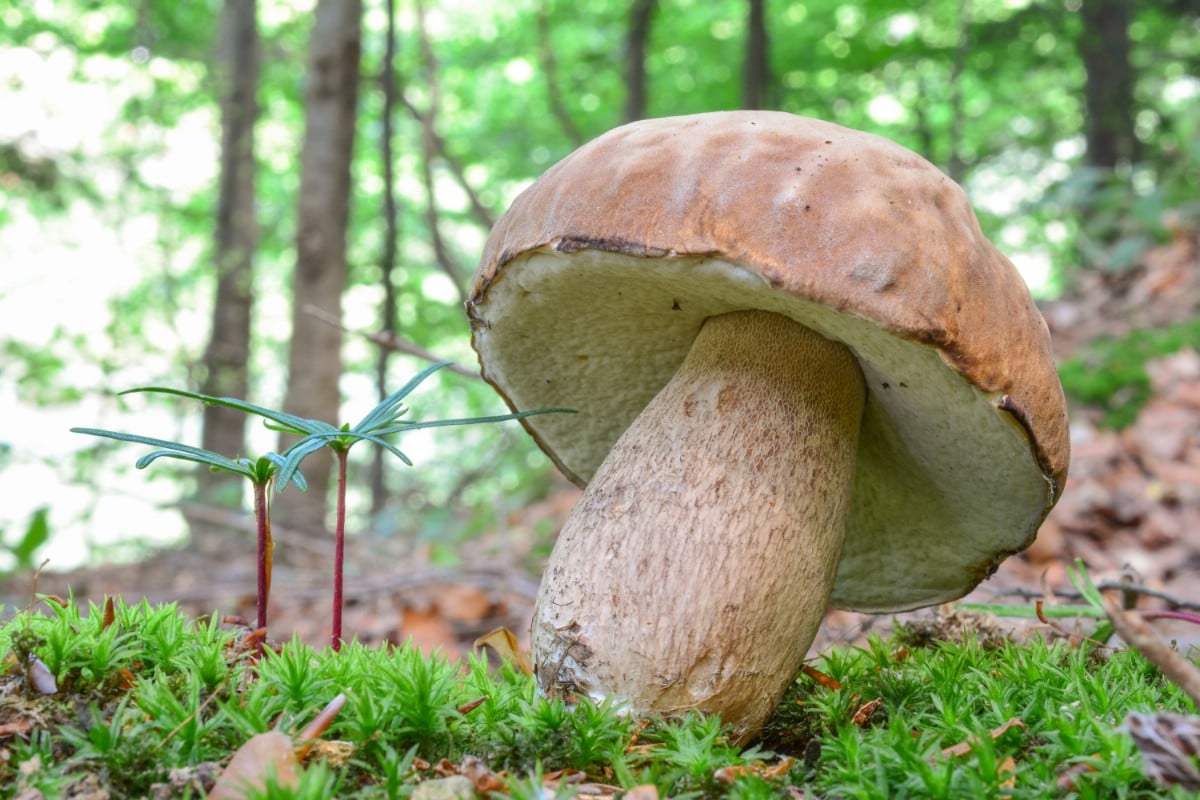
Cooking With Slippery Jacks
Once you’ve harvested your slippery jacks, cleaning them thoroughly before consuming them is essential. You can do this by gently brushing off any dirt or debris with a soft-bristled brush. Avoid washing the mushroom with water, as this can cause it to become waterlogged and lose its flavor. When you cut them, look for maggots and other bugs, as they often take up residence in these tasty mushrooms.
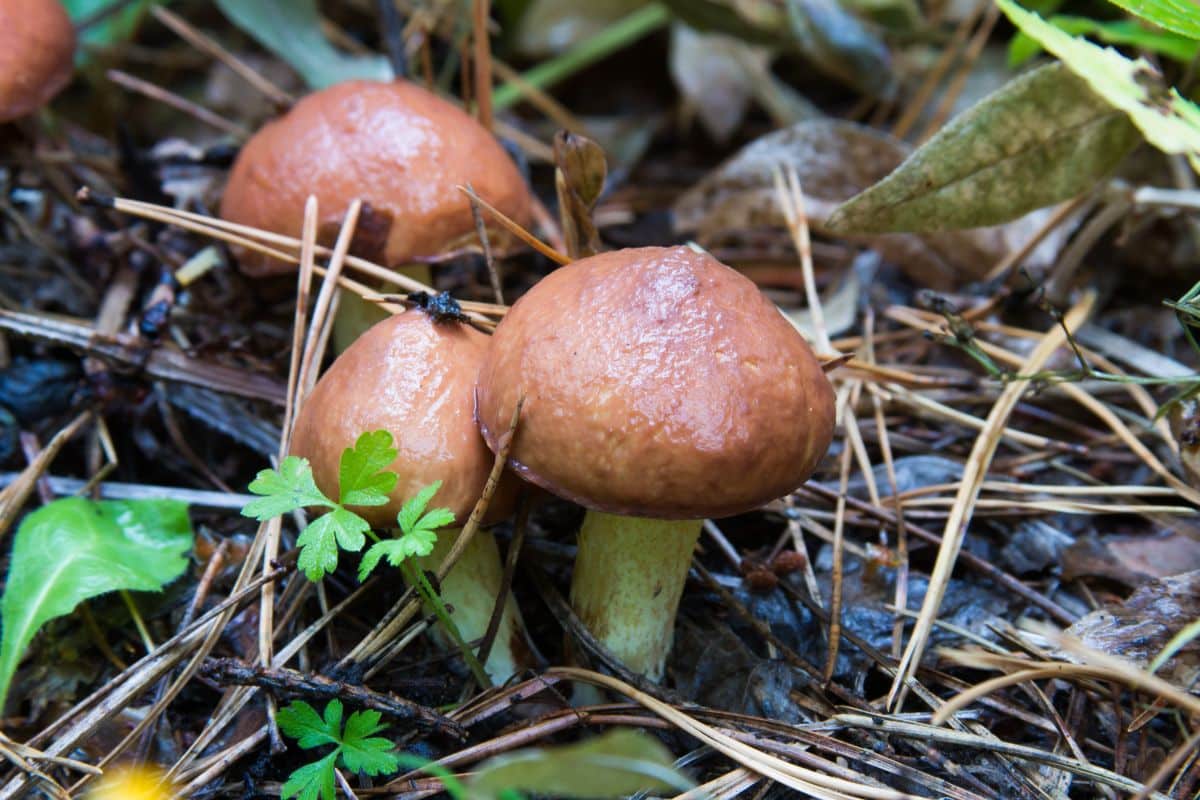
Slippery jack mushrooms have a smooth, buttery texture that feels indulgent. They are of a good size when fresh but their flesh is spongy. Cooking them reduces the flesh considerably since the mushroom has such a high water content. This may be what makes it so buttery, though, as its flesh cooks down to a velvety consistency.
Before cooking, it is HIGHLY recommended that you peel off and discard the slimy exterior skin and the pore tubes. You can leave them on, but their sliminess does not go away and is a bit unpleasant on the palate. The pore tubes don’t need to be removed if the specimen is young and firm. But, older specimens with dense spongy pores should be removed before cooking.
Slippery jacks do not last long after being picked. They should be cooked within 1-2 days or dried to preserve them. They can be fried, cooked in stews and soups, or combined with other types of mushrooms. Just be careful about using a blender with this mushroom, as it may turn your soup into a goopy, unappetizing substance.

Some people may have allergic reactions or digestive issues when consuming this fungus, so it is best to cook it before eating. Additionally, the skin can affect the quality of other fungi that have been collected with it.
There are many ways to prepare slippery jacks, but one of the most popular is to sauté them with garlic and butter. Simply slice the mushroom and sauté it in a pan with butter and garlic until it is tender and golden brown. You can also add slippery jacks to soups, stews, and sauces for a buttery, meaty flavor.
Slippery Jack Recipes:

Slippery Jacks Common Questions
Can you eat Slippery Jacks raw?
No. The skin should be peeled off, and the pores removed if they’re super spongy. Then, boil or saute before eating.
Do Slippery Jacks bruise blue?
No, they do not. This is one way to tell them apart from some lookalike species.






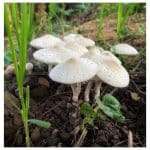
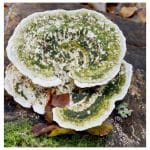
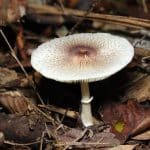
Leave a Reply